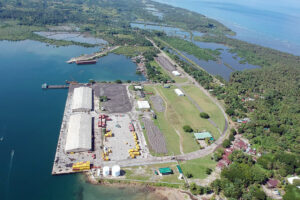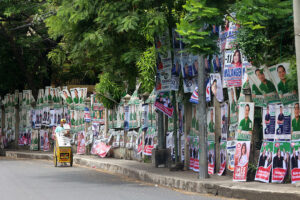By Beatriz Marie D. Cruz, Reporter
THE PHILIPPINE Economic Zone Authority (PEZA) is expecting 14 additional economic zones (ecozone) to be approved within the year.
“We’re awaiting 14 more proclamations happening hopefully within the year,” PEZA Director-General Tereso O. Panga told reporters on the sidelines of an event on Tuesday.
“We’re still on track with the ambitious target of having 30 proclamations within the year,” he added.
The Office of the President issues the proclamation which officially designates specific parcels of land as special economic zones, upon the recommendation of PEZA.
Mr. Panga also noted that the Palawan Mega Ecozone is likely scheduled for ecozone proclamation “maybe by next year.”
“There’s an official turnover already by the Bureau of Corrections (BuCor) of an initial 4,000 hectares (ha) out of 28,000 ha. So, we will be doing the groundbreaking, and also the visit to Palawan, maybe by next month,” he said.
The Palawan Mega Ecozone will be established within the 28,000-ha Iwahig Prison and Penal Farm in Puerto Princesa City, Palawan. It is scheduled to be operational by 2028.
According to PEZA, the ecozone is expected to attract emerging and high-value industries like electric vehicle production, advanced manufacturing, green ores processing and nano tech. It also seeks to attract knowledge-based and artificial intelligence-driven industries as well as those related to the medical field.
The initial 4,000 hectares turned over by the BuCor will cover the first phase of the development, PEZA said.
BuCor Director-General Gregorio Pio P. Catapang, Jr. also recently announced plans to develop a BuCor property in Sablayan, Mindoro Occidental into a township ecozone.
The Philippine government is banking on ecozones to attract more investments and generate jobs for the country.
In the first half of the year, President Ferdinand R. Marcos, Jr. approved four ecozones — the expansion of the Aboitiz-led Lima Technology Center in Lipa and Malvar, Batangas, as well as the IT parks in Bacolod City under Megaworld Corp., and the Tagbilaran Uptown IT Hub 2 in Bohol.
John Paolo R. Rivera, a senior research fellow at the Philippine Institute for Development Studies, said more ecozone approvals give investors predictability and confidence to invest in the country.
“Through fiscal incentives, infrastructure support, and streamlined regulation, ecozones create clusters that stimulate local supply chains and enhance productivity spillovers in surrounding communities,” he said in a Viber message.
Mr. Rivera added that stronger collaboration among PEZA, local government units, and infrastructure agencies can help expand ecozone development beyond traditional manufacturing to digital, green, and innovation-driven zones.
George N. Manzano, an economist from the University of Asia and the Pacific, said investors can rely on reliable power, roads, logistics, tax incentives and simpler rules in economic zones.
“In many developing countries like the Philippines, we often struggle with poor infrastructure, slow government processes, and even corruption. Ecozones were created partly to deal with these problems,” he said in a Viber message.
Mr. Manzano noted that having more ecozones could help boost regional development.
“They create jobs outside Metro Manila and bring in new technologies and business practices that local workers can learn from. In that sense, ecozones can be engines of both regional and national growth,” he said.
“Of course, there’s a risk too. If ecozones don’t connect with local suppliers or nearby industries, they can become isolated enclaves — productive, yes, but with limited benefits for the surrounding community. The challenge is to make sure the growth they generate actually spills over to the local economy,” Mr. Manzano added.
About 34 ecozones have been proclaimed since the beginning of the Marcos administration, accounting for P14.7 billion in capital investment, PEZA said.






